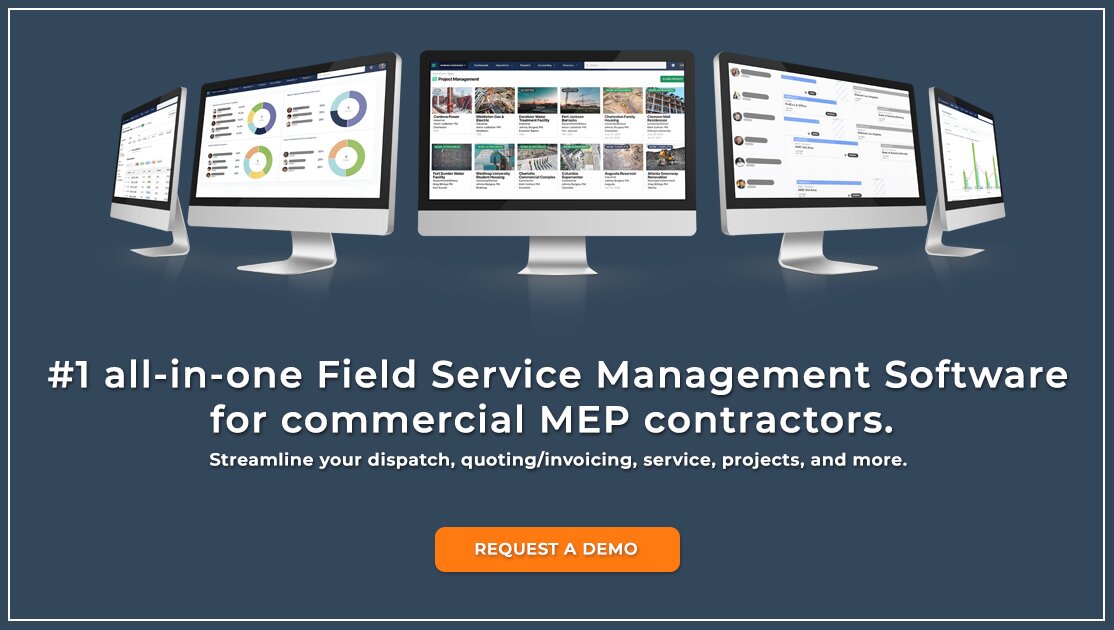Field maintenance software is a type of application designed to help businesses manage the maintenance of their assets in the field. This can include anything from tracking employee performance, scheduling equipment repairs and preventive maintenance routines, to monitoring inventory levels, fuel consumption rates, and more. The software is designed to give businesses complete visibility into the state of their assets and help them make informed decisions that will maximize efficiency while minimizing cost. With a comprehensive field maintenance solution, businesses are able to quickly access critical data points that can be used to make informed decisions about asset management. This can result in better overall operations for organizations as well as additional cost savings.
Additionally, many field maintenance solutions offer mobile capabilities so that teams can stay connected on-the-go. This provides workers with access to real-time data and ensures that they are able to take swift action when needed. With mobile capabilities, companies can stay ahead of potential problems before they become major issues. Field maintenance software is essential for any business looking to streamline asset management and maximize its return on investment. By using field maintenance software, businesses can make sure that their assets remain operational and efficient, allowing them to remain competitive in their respective markets. It is also a great way for organizations to save money by preventing costly repairs and downtime due to preventable issues. With the right field maintenance solution, businesses can reduce costs while still ensuring optimal performance from their assets.
What are the key features of Field Maintenance Software?
Field maintenance software typically includes features such as asset tracking, preventive maintenance scheduling and monitoring, inventory control, fuel consumption tracking, employee performance logging and more. This helps businesses keep a close eye on their assets in order to optimize efficiency and minimize costs. Additionally, many solutions also offer mobile capabilities that provide access to real-time data from any location. This enables teams to take swift action when needed in order to stay ahead of potential problems before they become major issues. Other features can include automated notifications for maintenance tasks, proactive reporting for preventive maintenance needs and job assignment tools for organizing employees. All of these features work together to help businesses manage their assets in the most efficient manner possible while keeping operational costs low.
What are the benefits of using Field Maintenance Software?
The benefits of using field maintenance software are numerous. By having access to real-time data about asset performance and usage, businesses can make more informed decisions that will help them save costs and optimize efficiency. Additionally, preventive maintenance scheduling allows organizations to avoid costly repairs due to preventable issues and ensures that their assets remain operational. With mobile capabilities, teams can stay connected on-the-go and take swift action when needed in order to stay ahead of potential problems before they become major issues. Finally, job assignment tools allow businesses to easily organize their employees in the most efficient way possible while ensuring optimal performance from personnel. All of these features work together to help businesses maximize their return on investment by reducing downtime and improving operations overall.
What are the challenges associated with Field Maintenance Software?
One of the main challenges associated with field maintenance software is setting up and maintaining accurate asset tracking. Without a reliable system for tracking and monitoring assets, businesses can face costly downtime due to preventable issues that could have been avoided if the proper data was available in real-time. Additionally, many companies struggle with integrating their existing systems with new software solutions, which can lead to compatibility issues and delays when switching to a new platform. Finally, it can be difficult to keep up with the ever-evolving technologies used in field maintenance software, as these platforms are constantly being updated and improved upon. All of these challenges need to be taken into consideration when implementing any type of field maintenance solution in order to ensure that businesses are getting the most out of their investment.
What are the different types of Field Maintenance Software?
There are a variety of different types of field maintenance software solutions available, each with its own unique features and benefits. For example, some solutions focus on asset tracking, while others concentrate on preventive maintenance scheduling or inventory control. Additionally, there are mobile-friendly solutions that provide access to real-time data from any location and job assignment tools for organizing employees. Furthermore, automated notifications can be set up to alert staff when maintenance tasks need to be completed and proactive reporting is available to help organizations stay ahead of potential problems before they become major issues. Ultimately, the type of solution needed will depend on the specific needs and goals of the business in question.
What are the different licensing options for Field Maintenance Software?
The licensing options for field maintenance software can vary depending on the provider. Generally, there are two main types of licenses: a subscription-based model or a perpetual license. The subscription-based model typically involves paying a monthly or yearly fee for access and ongoing support, with the ability to cancel at any time. Meanwhile, the perpetual license generally requires an upfront payment that grants users access forever, but there is no option for additional support after purchase. Additionally, some providers also offer limited “freemium” versions of their software that come with basic features and functionalities but require an upgrade in order to unlock premium capabilities such as customization options, automated notifications, and more. Ultimately, it’s important to carefully consider all of your needs prior to selecting a licensing option.
Are there any restrictions or compliance requirements when using Field Maintenance Software?
Yes, depending on the specific software solution being used, there may be certain restrictions or compliance requirements that need to be met. For instance, organizations operating in regulated industries such as healthcare, finance, and energy may have to comply with specific rules and regulations related to data security or privacy. Furthermore, businesses using cloud-based systems may need to ensure their systems are compliant with industry standards such as HIPAA or PCI DSS. Ultimately, it’s important for businesses to research any relevant laws and regulations prior to selecting a field maintenance software solution in order to avoid potential issues.
What are some best practices for using Field Maintenance Software?
When using any type of field maintenance software, there are a few best practices to keep in mind. First, it’s important to have an organized system for tracking assets and tasks in order to ensure that all jobs are completed on time and with the highest level of quality. Additionally, having up-to-date training available for staff enables them to better understand how the software works and helps them work more efficiently. Finally, utilizing analytics tools can help track performance trends over time and identify areas where improvement is needed. By following these best practices, businesses can ensure that their field maintenance operations remain effective and efficient.
What resources are available to help organizations with their implementation of Field Maintenance Software?
Organizations looking to implement field maintenance software have a variety of resources available to them. Many providers offer in-depth tutorials and support, as well as user forums where users can ask questions and share their experiences. Additionally, there are numerous blogs and websites devoted to providing advice on the best tools and strategies for successful implementation. Furthermore, attending conferences related to field maintenance software can provide helpful information about the latest trends in the industry. Ultimately, taking advantage of all the available resources can ensure that organizations get the most out of their software solutions.
Are there any alternatives to Field Maintenance Software?
Yes, there are several alternatives to field maintenance software that businesses may wish to consider depending on their specific needs. For instance, businesses may choose to use manual methods such as paper forms or spreadsheets for tracking assets and tasks. Additionally, companies looking for more sophisticated solutions may consider enterprise asset management (EAM) software which is designed to help organizations better manage their operations, assets, and processes. Finally, some organizations also make use of cloud-computing applications that can provide real-time visibility into their field maintenance activities. Ultimately, the choice of a suitable alternative will depend on the specific requirements of each organization.
What is the future or trends of Field Maintenance Software?
The future of field maintenance software is likely to involve more automated solutions and deeper integration with Internet of Things (IoT) devices. In addition, cloud-based systems are expected to become more prevalent as they provide greater flexibility and scalability compared to traditional on-premise systems. Furthermore, predictive analytics capabilities are likely to become increasingly important in order to enable organizations to proactively manage their assets and optimize their processes. Finally, businesses should also pay attention to emerging technologies such as AI and blockchain which could revolutionize the way that organizations approach maintenance activities in the near future. By staying up-to-date on these trends, organizations can ensure they have the necessary tools in place for successful field maintenance operations.
What are people saying about the use of Field Maintenance Software?
Overall, reviews of field maintenance software are generally positive. Many users report that the software has enabled them to better manage their operations and improve the efficiency of their processes. Others have praised the user-friendly interface and robust features which simplify complex tasks such as inventory tracking, scheduling, and reporting. Additionally, many customers also appreciate the cost savings associated with using automated solutions compared to manual methods. Ultimately, most users agree that field maintenance software is an invaluable tool for any organization looking to streamline its operations and increase productivity.



